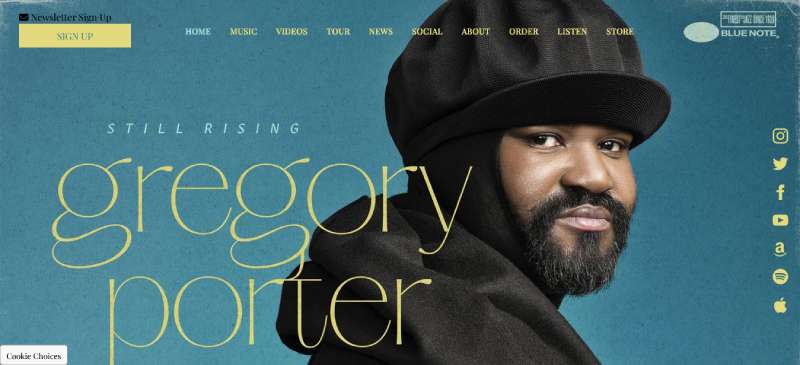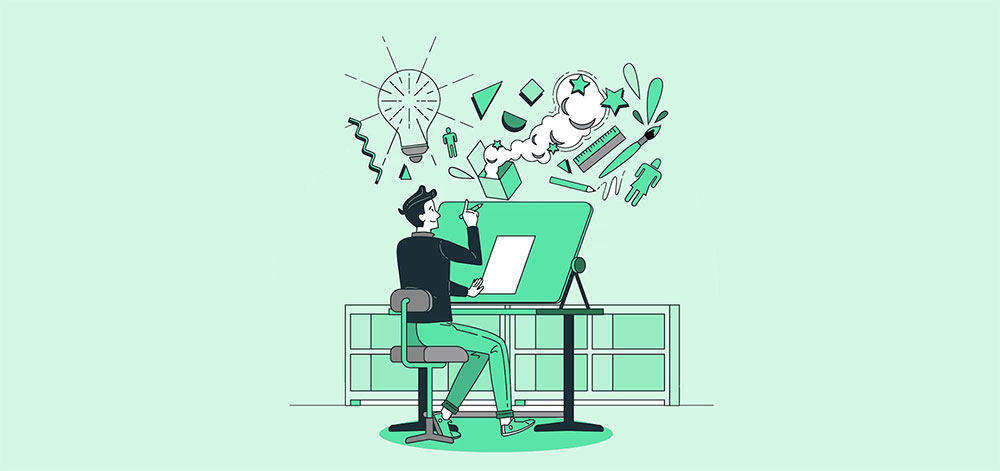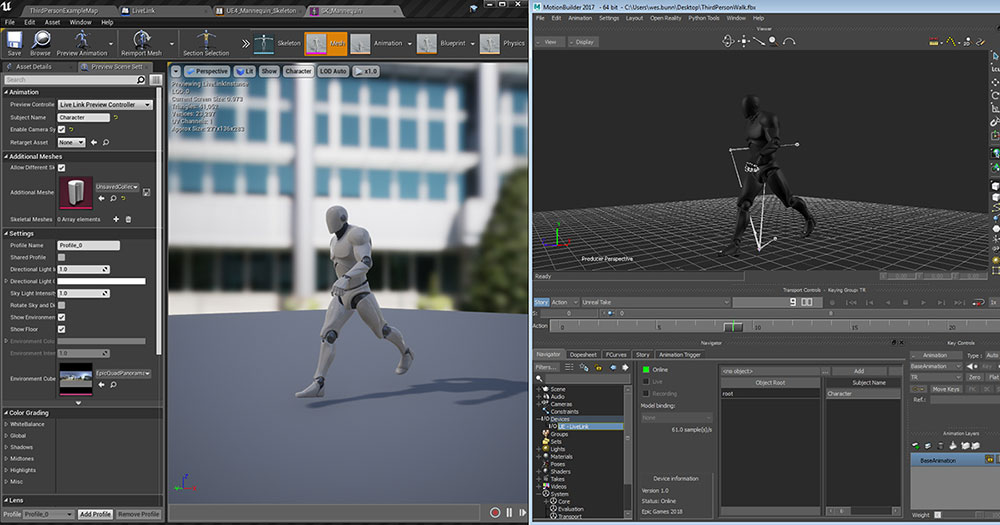Web Designer vs Front-End Developer: Navigating the Web World

Ever found yourself pondering the cryptic dance between web design and front-end development? Picture it: a tango where visual flair meets technical prowess. Let’s unravel this enigma, shall we?
In the arena of creating digital masterpieces, the roles can appear deceptively intertwined.
There’s me – the architect of aesthetics, with a keen eye for user interface, harmonizing color theory with brand identity to whip up compelling and intuitive spaces.
Now, enter the front-end developer – a maestro with a knack for materializing these visions, breathing life through HTML/CSS, wrangling JavaScript to ensure every interactive snippet serves its purpose beautifully.
As you trail through this article, expect to gain a crystal-clear delineation of these two digital dynamos.
By the final punctuation mark, you’ll recognize not just the discrete brushstrokes each contributes to the web canvas, but also how these roles synergize to sculpt the internet’s facade.
Without further ado, let the curtains rise on this digital stage…
Web Designer: The Architect of the Web

Web designing? It’s an art. When you step into the digital realm, there are two types of artists you’ll bump into often: the web designer and the front-end developer.
Each has its own brushstrokes, but the canvas? The vast, intricate web. Here’s a dive into the life of a web designer, one half of the “web designer vs front end developer” saga.
Role and Responsibilities
Visual Aesthetics and User Experience
Being a web designer, I often feel like a magician. It’s my job to make sure the digital space not only looks good but feels right too.
Ever landed on a website and thought, “Wow, this looks fresh”? Or maybe, “Man, this is easy to navigate”? That’s my kind of magic.
It’s all about getting those aesthetics spot on and ensuring the user doesn’t get lost in the maze.
Planning and Conceptualizing Design Elements
Before any magic spell is cast, there’s planning. Remember trying to fit those mismatched Lego blocks as a kid?
Web design is somewhat like that, but cooler. Each element, be it a button or a banner, needs to fit perfectly. We sketch, erase, sketch again, and keep doing it till every piece finds its place.
Key Skills and Tools
Color Theory and Typography
Colors. They aren’t just blobs on a palette. They speak. A bright red might scream ‘Look at me!’, while a calm blue whispers ‘Trust me’.
Combine this with typography – the style and appearance of text – and you’ve got a story. It’s like choosing the perfect outfit for an event. You don’t want to show up at a formal party in beachwear, right?
UI Design Patterns and Principles
The world of web design is vast. But like every universe, it has its laws. These laws, or design principles, guide us. They’re like our North Star.
UI patterns? Those are recipes that worked for others. Using them as a base, we whip up our own gourmet dishes.
Prototyping Tools
Ever watched chefs on those cooking shows? They often have a trial run. For us, tools like Figma are our test kitchens.
Here, we craft a miniature, workable model of the website. It’s like trying out a recipe before serving it to guests.
Graphic Design Software
Armed with our tools, Adobe Photoshop and Illustrator being our swords, we battle out every pixel. Here, we draw, erase, color, and play until the visual elements look just right.
The Design Process
Research and Understanding User Needs

Before we start, we need to know who we’re cooking for. Is it a young crowd? A professional audience?
Every design has a user, and understanding them is key. So, we dive deep. We want to know what makes our audience tick. It’s kinda like being a detective, but with cooler gadgets.
Crafting User-Friendly Designs
Once we’ve got our clues, it’s crafting time. This is where the true magic happens.
A design isn’t just about looking good; it’s about feeling good too. It should be like that comfy couch everyone fights for – familiar, intuitive, and just right.
Collaboration with Developers
Ah, the developers. They’re the ones who bring our blueprints to life. Think of us as the architects and them as the builders.
There’s always this exciting back and forth, a game of digital ping pong. It’s like, “Hey, can we make this button pop more?” or “How about a smoother transition here?”
The “web designer vs front-end developer” debate isn’t really a competition; it’s more like a dance, and man, when we synchronize, the results are dazzling.
Frontend Developer: The Builder of the Web

Ever heard that age-old debate of web designers vs front-end developers? Well, here’s a peek into my world, where code meets creativity.
I mean, someone’s gotta make those stylish designs functional, right?
Role and Responsibilities
Implementing Visual Designs in Code
So, you know those fancy layouts and dope visuals? As a front-end developer, my gig is to take those and weave them into the digital fabric. I’m the bridge. The middleman.
Designers hand me their masterpiece, and I sprinkle a bit of code magic to make it come alive online.
Ensuring Website Functionality on the Client Side
Alright, so what’s the deal with “client side”? Let me break it down. The web’s like a massive stage play. Behind the curtains (or the server), a lot happens. But my playground?
It’s the stage – where the audience (users) watch the show. Every click, scroll, or hover? That’s my jam. It’s my job to ensure the show is smooth, dazzling, and glitch-free.
Testing and Debugging
We all have our oops moments, right? Maybe you spill some coffee or forget an umbrella on a rainy day. In the coding world, our ‘uh-ohs’ are bugs.
Pesky little critters that mess up the flow. And guess who’s the bug buster? Yep, yours truly. Testing is like rehearsing before the big show – gotta make sure everything’s on point!
Key Skills and Tools
HTML, CSS, and JavaScript
In the epic tale of web designer vs front-end developer, these three are my trusty sidekicks. They’re the fundamental building blocks.
Like, if web development were cooking, HTML would be my base ingredients, CSS the seasoning, and JavaScript? Oh, that’s the sizzle!
Frameworks and Libraries
Ever heard of shortcuts that aren’t cheat codes? That’s what frameworks and libraries are for us.
Pre-made chunks of code magic to make our lives easier. Think of them as DIY kits. You wanna build a treehouse? Why start from scratch when you’ve got a kit ready?
Version Control (e.g., Git)
Imagine writing a story and keeping track of every change, every edit. Git’s kinda like that for coding. It’s my time machine. Messed up? No problemo! I can hop back in time and fix it.
Responsive Design and Cross-Browser Development
Ever tried opening a site on your phone, and it looked wonky? Or perhaps it looked smashing on Chrome but super weird on Firefox?
That’s where my skills come in. Making sure every site looks gorgeous, no matter where you view it.
The Development Process
Translating Design into Code
From sketches to a living, breathing website. That’s the transformation story I helm. Designers sketch the dream, and I’m the one whispering, “Okay, let’s make it real.”
Collaboration with Designers and Backend Developers
Remember the web designer vs front end developer chatter? Well, in reality, it’s more of a team huddle.
Designers throw ideas, backend devs chime in with their server magic, and me? I’m right there, ensuring it all knits together beautifully.
Continuous Testing and Optimization
The digital realm’s ever-evolving. Just like fashion, what’s hot today might be meh tomorrow. So, it’s a cycle. Build. Test. Optimize. Repeat. Keeping the web spick and span, one line of code at a time.
Overlapping Areas and Collaboration
Ah, the never-ending tango of web designer vs front end developer. They might seem worlds apart, but hey, ever seen peanut butter meet jelly? It’s that kind of epic collab.
Shared Tools and Skills
Importance of Communication Between Roles
Alright, let’s break it down real quick. Imagine I’m crafting the world’s sickest poster, right?
If I don’t chat with the printer guy about the colors, paper type, or size, chances are, it’ll be a hot mess. Same deal in the digital playground.
Designers and devs gotta be tight. Chatting, sharing, vibing. The end goal? That stellar user experience everyone can’t stop talking about.
The Gray Area: Designers Who Code and Developers Who Design
Blurred lines, anyone? The web world is funky. You’ve got peeps like me, a designer dabbling in code, and then some front-end wizards trying their hand at design.
It’s like chefs trying to bake or bakers whipping up a main course. Unpredictable? Heck yeah. Exciting? You bet!
The Integrated Approach
Benefits of Understanding Both Design and Development
Picture this: a designer who can code or a coder with a flair for design. It’s like having a Swiss army knife in your pocket.
Knowing both worlds means less lost in translation moments. And let’s be real; it’s kinda cool being the Jack or Jill of all trades.
The Rise of Full-Stack Developers
Ever heard of those legends who conquer both the realms of design and development? Full-stack devs, they call them.
They’re like the unicorns of the digital realm, juggling both aesthetics and algorithms.
Salary and Career Prospects
Average Salaries Around the World
Alright, let’s talk money. Being in the web biz, whether you’re deep-diving into pixels or code, is kinda lucrative.
Web designers and front-end developers are two different roles in web development, and their salaries can vary depending on several factors such as location, experience, and skill sets. Here are some key points from the search results:
- The average annual web designer salary in the US is about $83k, according to Glassdoor
- The median annual pay for web developers in the US is $86k, according to Glassdoor.
Career Growth and Opportunities in Both Fields
Here’s the deal. The digital realm? It’s booming. Websites, apps, interactive thingamajigs, you name it. There’s always something brewing.
The whole web designer vs front end developer debate? It’s more about synergy than rivalry.
You kickstart as a newbie, but with grit, late nights, and a dash of creativity, the sky’s the limit. Whether you’re about the aesthetics, the code, or a bit of both, there’s a gig out there with your name on it. And who knows?
Maybe one day you’ll be leading a team, launching your own startup, or speaking at some swanky international conference.
FAQ On Web Designer Vs Front End Developer
Is Web Design Just About Making Things Look Pretty?
In a nutshell, no way. We’re diving deep into user experience, juggling layout, graphics, and brand identity. It’s an art meeting science kind of gig – ensuring sites don’t just seduce visually but are also a breeze to navigate.
Do Front End Developers Also Design Websites?
Think of them as the ones who turn blueprints into brick-and-mortar – well, in a digital sense. Armed with CSS, JavaScript, and an assortment of web development tools, they’re the wizards who morph designs into clickable, interactive experiences.
Who Calls the Shots, the Web Designer or Front End Developer?
Neither’s the boss, it’s an alliance. It’s like a screenplay and a director – designers draft the vision, and developers make it a reality. Both sync up to ensure the end product hits the sweet spot.
Can a Web Designer Write Code?
Sure can, albeit at varying degrees. Some dabble just enough to splash their ideas in basic HTML/CSS; others go the whole nine yards, blurring the lines between design and development.
Are Web Design and Front End Development Interchangeable Terms?
Not quite. They’re like two different instruments in the same band. Web design‘s more about aesthetic and user journey, while front-end development is coding those ideas into a functional site.
What’s More Important, Web Design or Front End Development?
Important? They both are, just in different ways. Imagine a theatre play – web design sets the stage, and front-end development brings the performance to life. Both are crucial for that standing ovation.
Does a Front End Developer Need an Eye for Design?
Wouldn’t hurt! Having a sense for design helps front-end pros make micro-decisions that align with the original vision. It smoothens the road from concept to execution.
What Tool Does a Web Designer Use That a Front End Developer Might Not?
Design-centric software, like Adobe Creative Suite, is the web designer‘s playground. Sure, developers might peek over the fence occasionally, but they’re more at home with code editors and development frameworks.
Are There Shared Skills Between Web Designers and Front End Developers?
Oh, absolutely. Both need a solid grasp on user interface (UI) principles, a hot pursuit for responsive design, and a staunch respect for web standards. It’s a shared language in a digital realm.
In the Future, Will Web Designers and Front End Developers Become One Role?
Who’s to predict the winds of tech change? But specialization has its perks. The more complex the field, the more there’s a need for focusing your craft, whether it’s in prototyping or mastering front-end frameworks.
Conclusion
Navigating through the creative labyrinth where web designer vs front end developer spar, we’ve dissected their individualities, haven’t we? It’s like uncovering the gears of a watch—each piece ticking in its own right for the grand scheme.
Now, on one hand, you’ve got the visionaries; those who paint digital canvases with a palette rich in UX, wireframes, and visual elements. On the flip side, the builders, with their robust HTML/CSS and JavaScript skills, ensure the scaffold stands firm and functional.
- Vision and Execution
- Harmony in Contrast
- Symbiotic Digital Dance
The curtain falls on this showdown with a revelation: web design and front-end development aren’t competing acts but harmonious players in the grand symphony of website creation. Each note struck and code woven paves the path for tomorrow’s digital vistas—beautiful, intuitive, and ever-evolving. With both artisans at the helm, the digital seas never looked more navigable.
If you liked this article about web designers vs front-end developers, you should check out this article about UX designers vs data analysts.
There are also similar articles discussing UI designer vs UX designer, UI designer vs graphic designer, UI designer vs UI developer, and web designer vs web developer.
And let’s not forget about articles on web designer vs UX designer, web designer vs UI designer, graphic designer vs graphic artist, and graphic designer vs UX designer.









